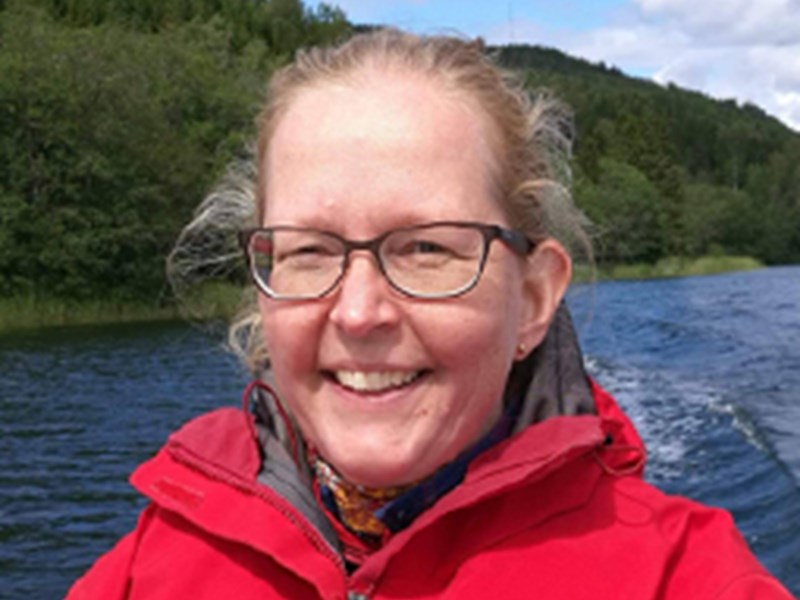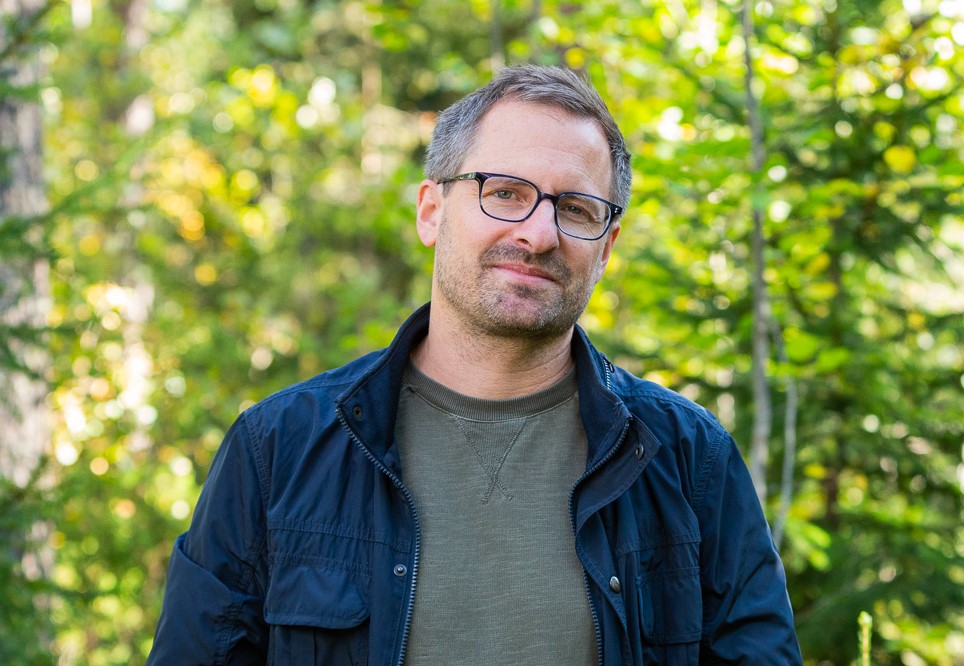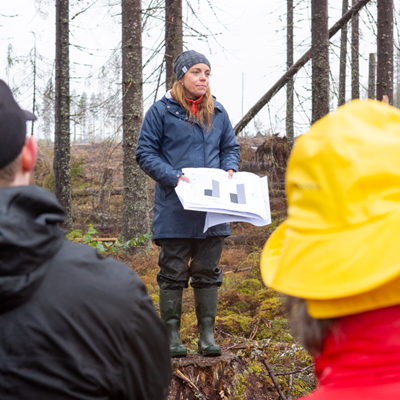Research

Within the biogeochemistry group, our research spans across spatial scales from the molecular level to the landscape level. At the landscape level, both forest, mire and stream ecosystems are included as well as how the role of landscape heterogeneity affects biogeochemical cycling.
Biogeochemical cycles
Greenhouse gas dynamics in ground- and surface waters
Freshwaters are an important component of the global carbon (C) cycle. Yet, the magnitude, variability and mechanisms of C exchange between the atmosphere and freshwaters remain poorly quantified.
For more information
Contact

Marcus Klaus
Forskare vid Institutionen för skogens ekologi och skötsel; Institutionen för skogens ekologi och skötsel, gemensamt
E-post: marcus.klaus@slu.se
Digital Landscape Technologies
Soil Moisture Maps
The SLU Soil Moisture Map is a high-resolution map that shows soil moisture on a scale from 0 to 100, where low values indicate dry soil and high values indicate wet soil.
For more information Soil Moisture Map
Peat Maps
Here is a comprehensive peat map of the forest landscape by predicting.The peat map is released as two different products, a classified map and a continuous map of the thickness of the organic layer.
For more information Peat Maps
Contact

Ditch Maps
The ditch maps are two high-resolution maps that show ditches as grids. The maps have been developed by artificial intelligence (AI) trained to identify ditches in high-resolution elevation models.
For more information SLU Dikeskartor
Contact

William Lidberg
Researcher at Department of Forest Ecology and Management
Phone: +46706295567
E-mail: william.lidberg@slu.se
Geographical Intelligence
Geographical intelligence combines geographical data and artificial intelligence (AI).
Contact

William Lidberg
Researcher at Department of Forest Ecology and Management
Phone: +46706295567
E-mail: william.lidberg@slu.se
Biosphere-atmosphere interactions
Biosphere-atmosphere interactions
The boreal biome is an important component of the global carbon (C) cycle and therefore a key element in national and international policy frameworks for climate change mitigation. However, current estimates of its sink-source strength and its responses to management and climate change remain uncertain. Thus, we need to improve our understanding of biosphere-atmosphere exchanges of C and GHGs for which comprehensive empirical data are required across multiple spatio-temporal scales. We get these data through a comprehensive network of flux- and environmental monitoring stations, read more under Infrastructure.
Contact

Matthias Peichl, Professor
Department of Forest Ecology & Management, SLU
matthias.peichl@slu.se
Peatland
Biosphere-Climate interactions in peatlands
The boreal biome is an important component of the global carbon (C) cycle and therefore a key element in national and international policy frameworks for climate change mitigation.
Contact

Matthias Peichl, Professor
Department of Forest Ecology & Management, SLU
matthias.peichl@slu.se
Climate and Management Impacts on Peatland Ecosystems
There is concern that peatlands are degrading in the face of global warming and that their function is diminishing as mitigation for climate change, shifting from carbon sinks to carbon sources. The situation may be more severe in peatlands that have already been drained for forestry or other human exploitation.
Contact

Shokoufeh Salimi, Postdoctor
Department of Forest Ecology and Management, Department of Forest Ecology and Management, joint staff
Peatland rewetting effects on ecosystem functioning and societal values
A multi-disciplinary research project bridging science and management that will explore questions related to climate impact (WP1), biodiversity (WP2) and policy (WP3) for drained and rewetted peatland forests in boreal Sweden.
Contact

Järvi Järveoja
Researcher at the Department of Forest Ecology and Management; Department of Forest Ecology and Management, joint staff
E-mail: jarvi.jarveoja@slu.se
Riparian Research
Soil biogeochemistry
Soil biogeochemistry
This project studies whether restoration of drained wetlands in the boreal landscape can lead to negative environmental effects in the form of increased methylation of mercury, as well as emissions of greenhouse gases to the atmosphere. Through extensive sampling of pristine, drained and restored wetland sites, these biogeochemical effects will be mapped both in time and in space.
Vacancy
For more information Soil Biogeochemistry
Contact

Researcher at the Department of Forest Ecology and Management; Department of Forest Ecology and Management, joint staff
Mercury biogeochemistry in forest-wetland-lake ecosystems
Our research focuses on improving the understanding of factors and processes in the control of mercury (Hg) transformations in soils and waters, such as the reduction and methylation of Hg(II) and demethylation of the neurotoxin methyl mercury (MeHg).
For more information contact

Ulf Skyllberg, Professor
Department of Forest Ecology and Management, Department of Forest Ecology and Management, joint staff
Wei Zhu

Researcher at the Department of Forest Ecology and Management; Department of Forest Ecology and Management, joint staff
E-mail: wei.zhu@slu.se
Trollberget wetland restoration
This project includes forestry practices, including forest harvest, site preparation, and riparian buffer design as well as other potential environmental effects from these management actions, including greenhouse gas emissions, carbon and water cycling, and biodiversity, among others.
For more information Trollberget
Contact

Eliza Maher Hasselquist, Researcher
Department of Forest Ecology and Management, Department of Forest Ecology and Management, joint staff
eliza.hasselquist@slu.se, +46907868603
Climate and Management Impacts on Peatland Ecosystems
There is concern that peatlands are degrading in the face of global warming and that their function is diminishing as mitigation for climate change, shifting from carbon sinks to carbon sources. The situation may be more severe in peatlands that have already been drained for forestry or other human exploitation.
Contact

Shokoufeh Salimi, Postdoctor
Department of Forest Ecology and Management, Department of Forest Ecology and Management, joint staff